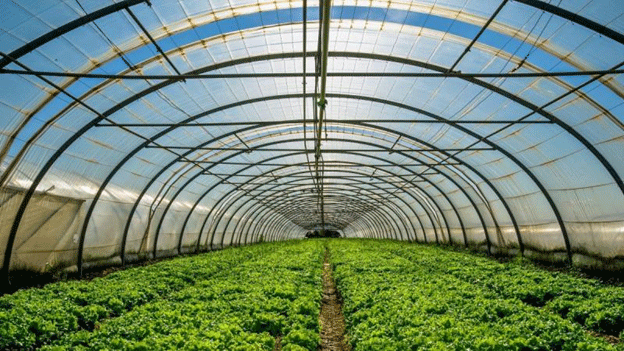Greenhouse farming has become a global phenomenon, rapidly expanding across diverse landscapes worldwide. According to a groundbreaking study published in Nature Food, the total global area dedicated to greenhouse cultivation spans approximately 1.3 million hectares, distributed across 119 countries. This extensive footprint underscores the profound impact and growing importance of protected cultivation methods in modern agriculture.
The study, led by Xiaoye Tong from the University of Copenhagen and a team of international researchers, utilized advanced deep learning algorithms and satellite imagery to provide unprecedented insights into the scale and distribution of greenhouse farming globally. Contrary to previous estimates, the research revealed a surface area nearly three times larger than previously thought, highlighting the rapid expansion and adoption of greenhouse technologies.
Key Findings:
- Global Distribution: China dominates the greenhouse sector with 60.4% of the total area, reflecting its economic growth and urban population demanding fresh produce. Spain follows with 5.6%, emphasizing Europe’s significant role in greenhouse farming alongside Italy, the Netherlands, and others.
- Regional Trends: While there’s stagnation in greenhouse expansion in the Northern Hemisphere, regions in Asia, Africa, and Central and South America continue to experience robust growth. Southern regions now account for 2.7 times more greenhouse area than their northern counterparts, indicating a shift in agricultural dynamics towards more favorable climates.
- Environmental Concerns: The study raises alarms about the environmental and social impacts of greenhouse farming, particularly in low and middle-income countries. Issues such as water resource depletion, soil degradation, and pollution are significant concerns that require urgent attention and regulatory oversight.
- Policy Implications: Researchers emphasize the need for enhanced regulatory frameworks and policies to manage the expansion of greenhouse farming sustainably. With inadequate regulations in many countries, there’s a crucial gap that needs to be addressed to mitigate environmental impacts and ensure long-term agricultural sustainability.
While greenhouse farming presents promising opportunities for agricultural productivity and food security, its rapid expansion demands careful consideration of environmental, social, and regulatory challenges. Addressing these issues will be pivotal in harnessing the full potential of greenhouse technologies while safeguarding natural resources for future generations.










